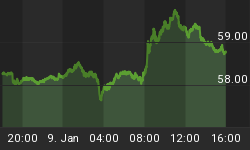The BEA's Personal Income and Outlays report shows consumers came to life in April.
Income rose 0.4% month-over-month and spending rose a whopping 1.0%.
Inflation adjusted, the numbers look good, not fantastic. The headline reports would have you believe otherwise.
Let's take a look at a couple mainstream media reports, then dive into the "real" picture.
U.S. Consumer Spending Climbed at Fastest Pace in Nearly Seven Years
The Wall Street Journal reports U.S. Consumer Spending Climbed at Fastest Pace in Nearly Seven Years.
Personal spending, which measures how much Americans paid for everything from raincoats to restaurants, increased 1.0% in April from a month earlier, the Commerce Department said on Tuesday. That was biggest one-month jump since August 2009.
Consumers had been steadily pulling back since mid-2015, one factor behind the paltry economic growth in the first quarter of the year.
Now it looks like the economy is picking up again, following a familiar pattern of a gloomy winter leading into a brighter spring.
Eye Catcher Spending
The Bloomberg Econoday reports ...
Highlights
April was definitely the month of the consumer as consumer spending surged 1.0 percent for the largest monthly jump of the economic cycle, since August 2009. The spending gain reflects strength in vehicle sales, which boosted durable spending by an outsized 2.3 percent in the month, and also reflects price effects for gasoline as spending on nondurable goods rose 1.4 percent. Spending on services, which is a bulwark of this report, rose a very solid 0.6 percent in the month.
The income side of today's report is also strong, up 0.4 percent which includes a 0.5 percent rise for wages & salaries. Consumers tapped into their savings for the spending rush as the savings rate fell 5 tenths to what is still a very solid 5.4 percent.
Price data are mixed as the PCE core rate -- which is the Fed's most important gauge -- rose only 0.2 percent with the year-on-year rate decidedly flat at an unchanged 1.6 percent and still, despite the gain for wages, 4 tenths below target. The overall price index shows more life, up 0.3 percent on the month and 3 tenths higher on the year at plus 1.1 percent.
The spending side of this report is an eye catcher and if repeated in May could very well, despite the lack of pressure on core prices, raise the chances for a June FOMC rate hike. Note that unit vehicle sales, to be posted on tomorrow's calendar, will offer the first substantial clues on consumer spending in May.
Real vs. Nominal PCE for Four Months
In real terms, and that is what will matter to GDP, Personal Consumption Expenditures rose 0.6% in April, but fractionally less than 0% in March.

Averaging March and April, the last three months look more like +0.3%, +0.3%, +0.3%. Those are good numbers, not fantastic numbers.
Much stronger than usual seasonality is in play here. Easter fell in March. April had five shopping weekends compared to four in March. Both of those patterns are typically the reverse.
The question is whether or not "eye catcher spending" will continue or if this was more of snapback from unusual seasonal factors.
Finally, the BEA made adjustments to its seasonal model last year. Those model adjustments have the effect of bumping up first and fourth quarter GDP estimates at the expense of second and third.















